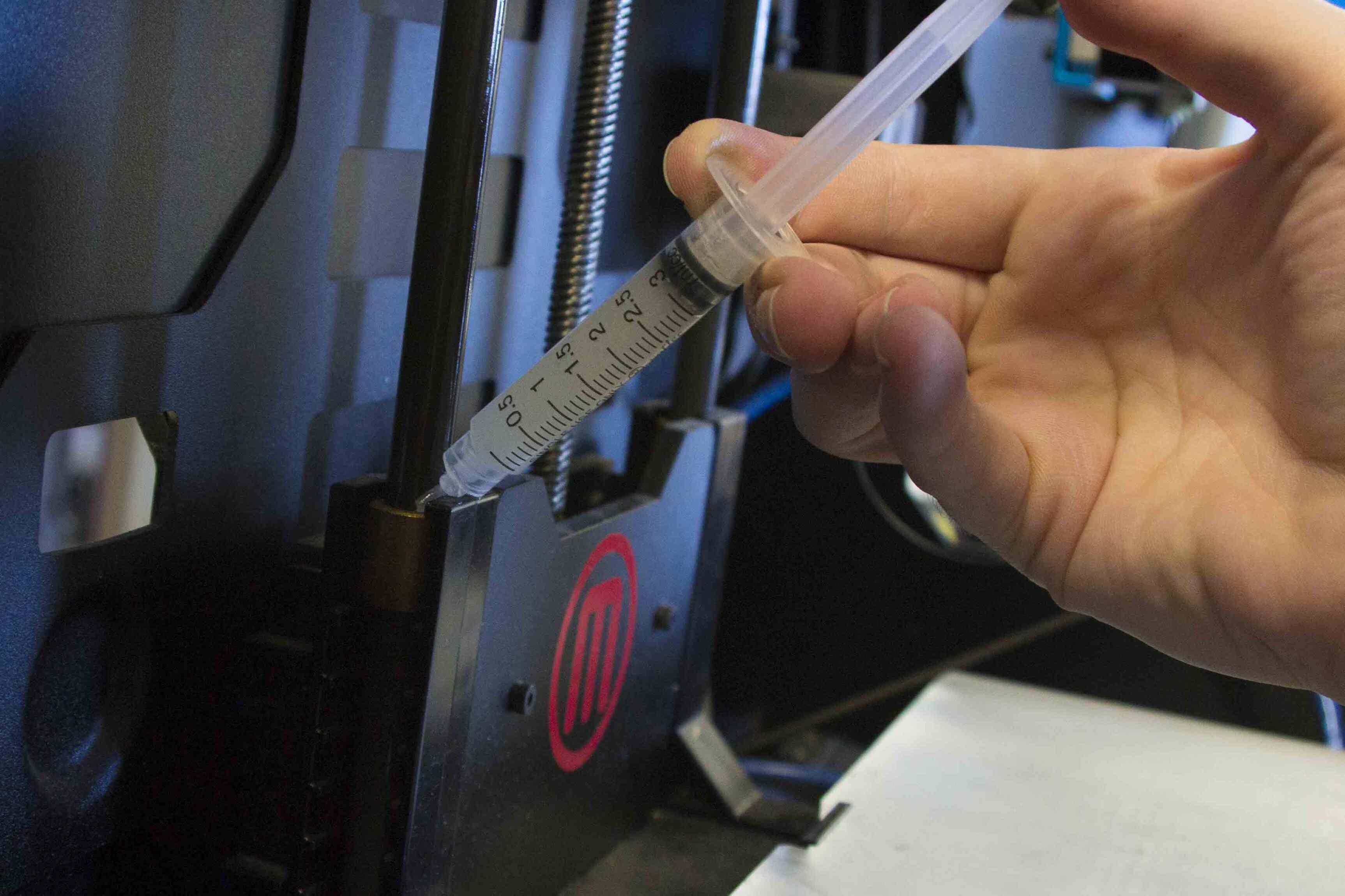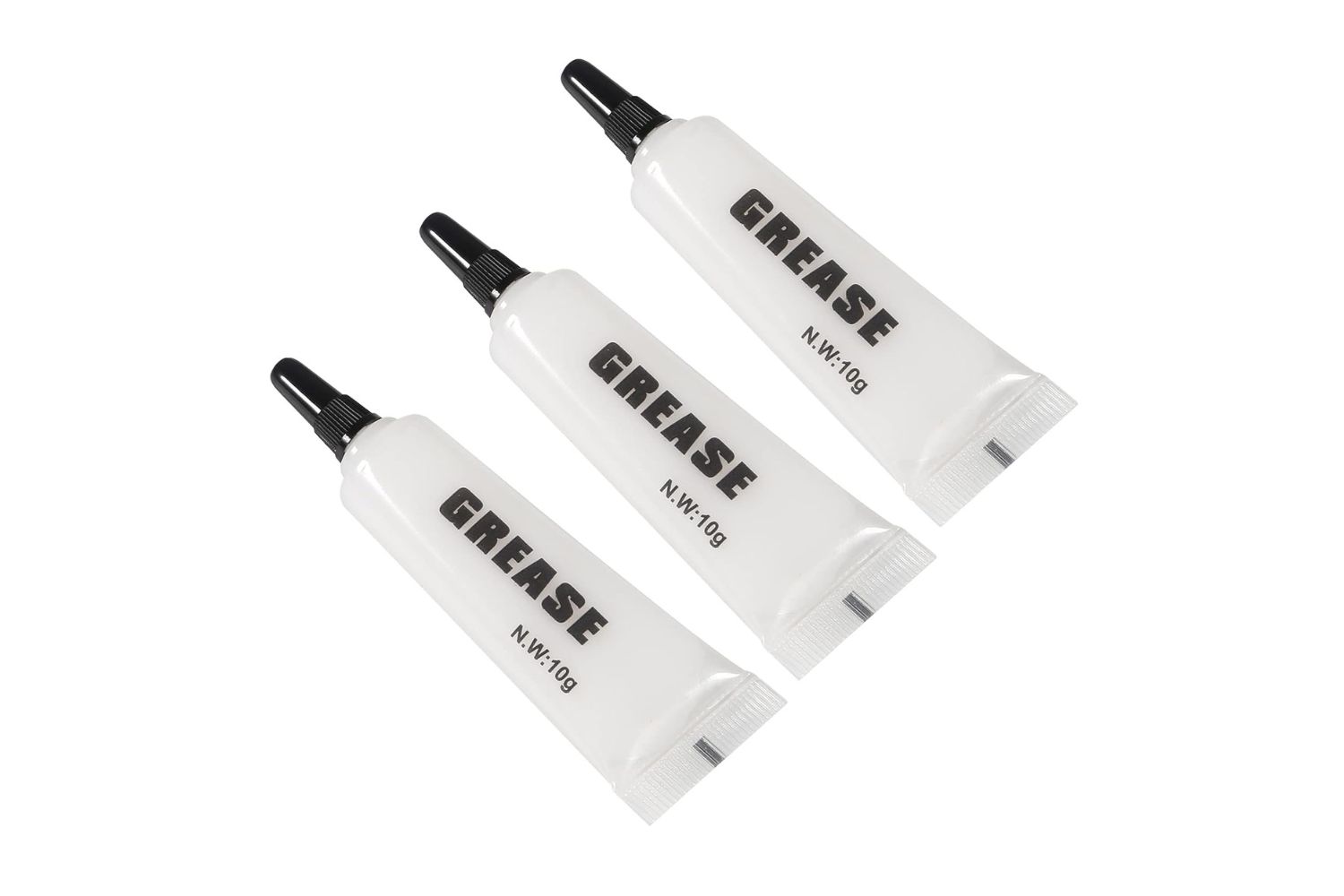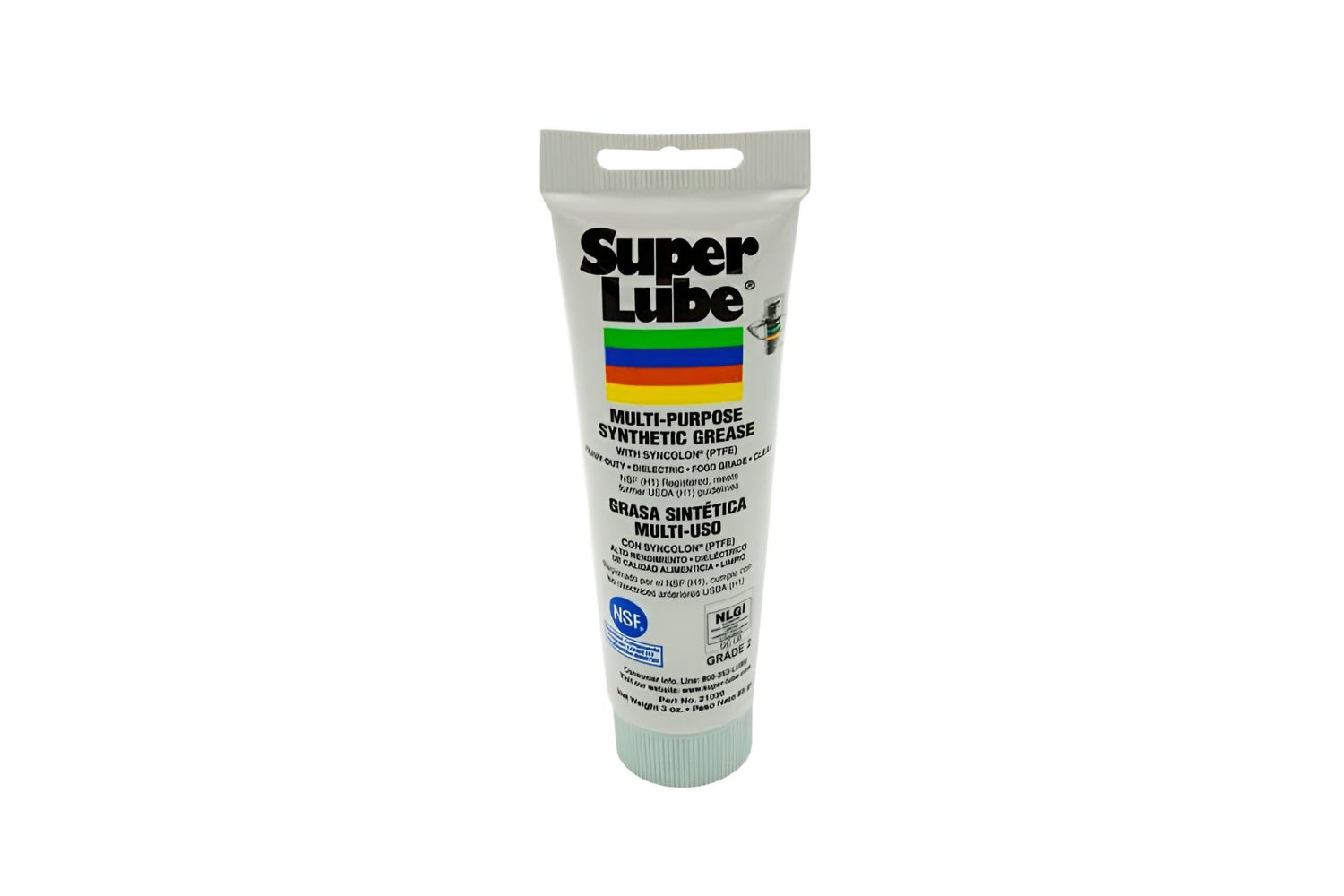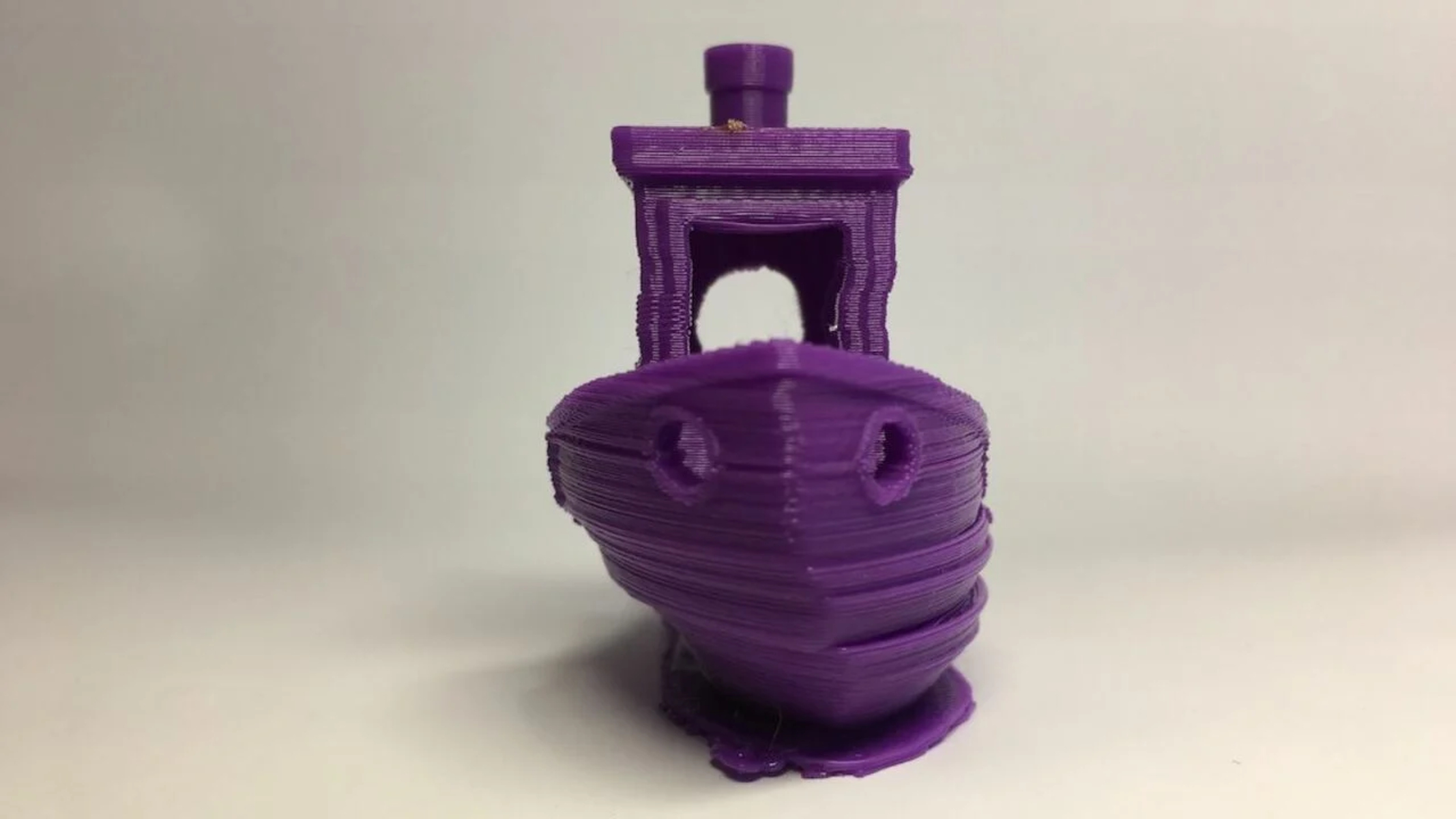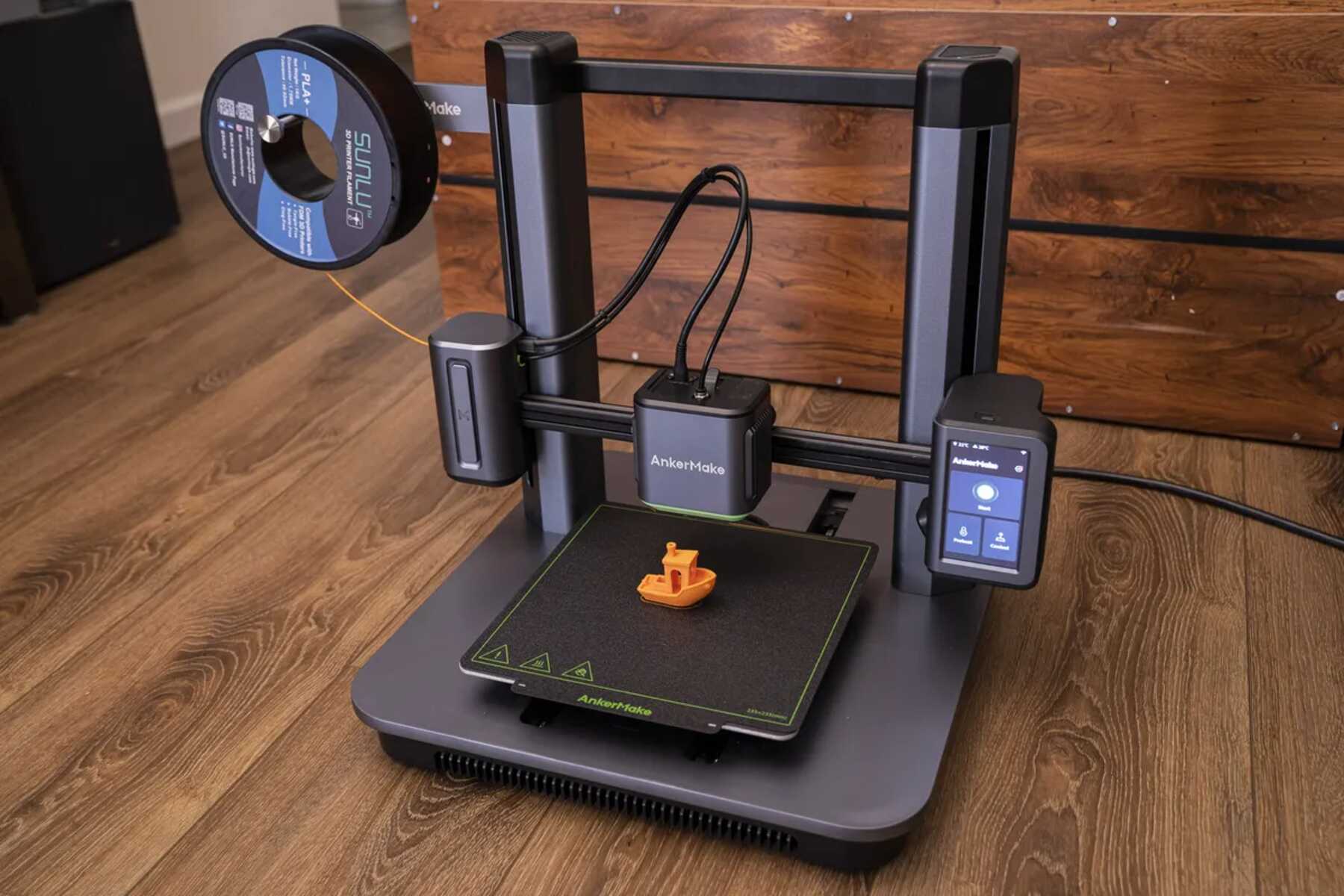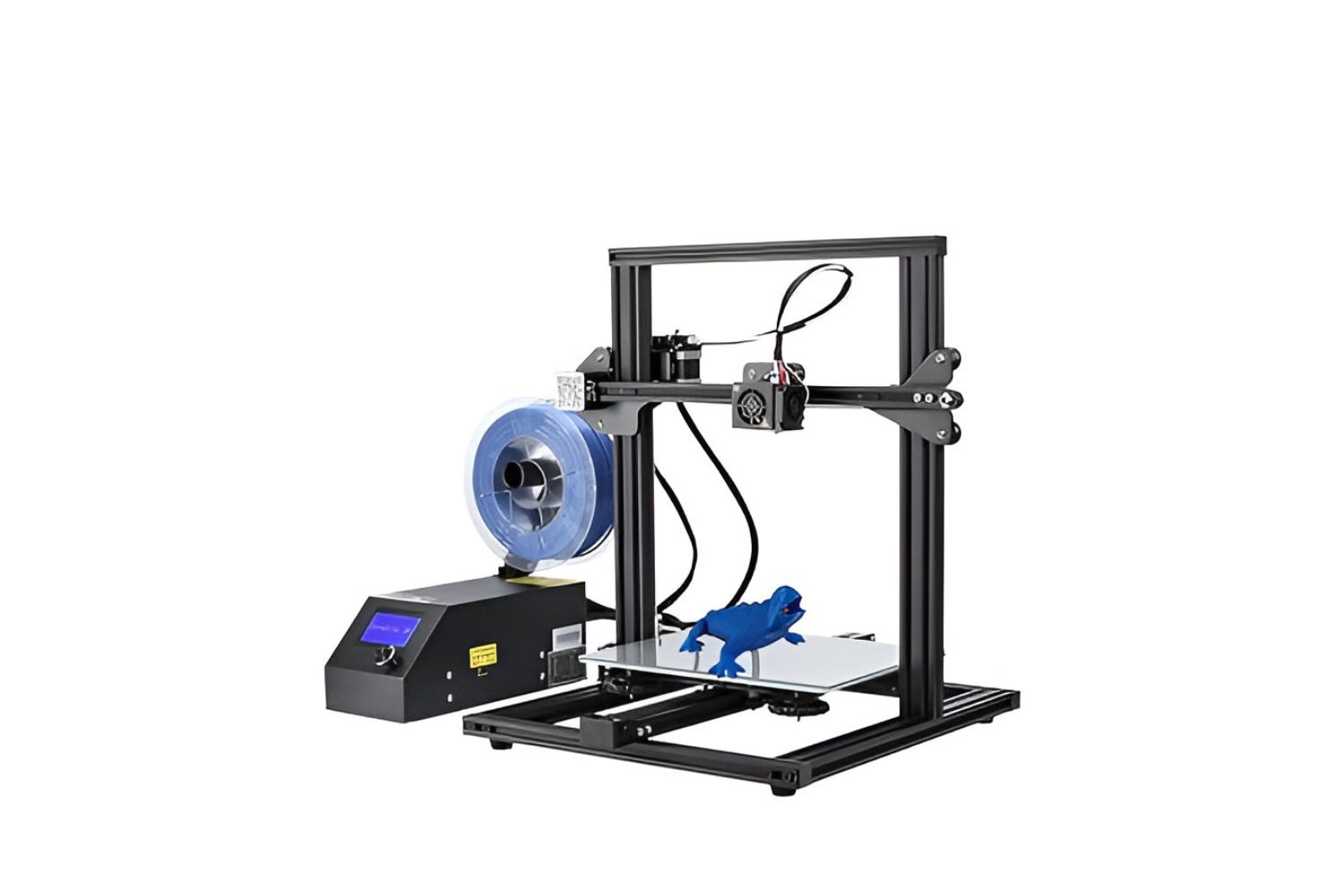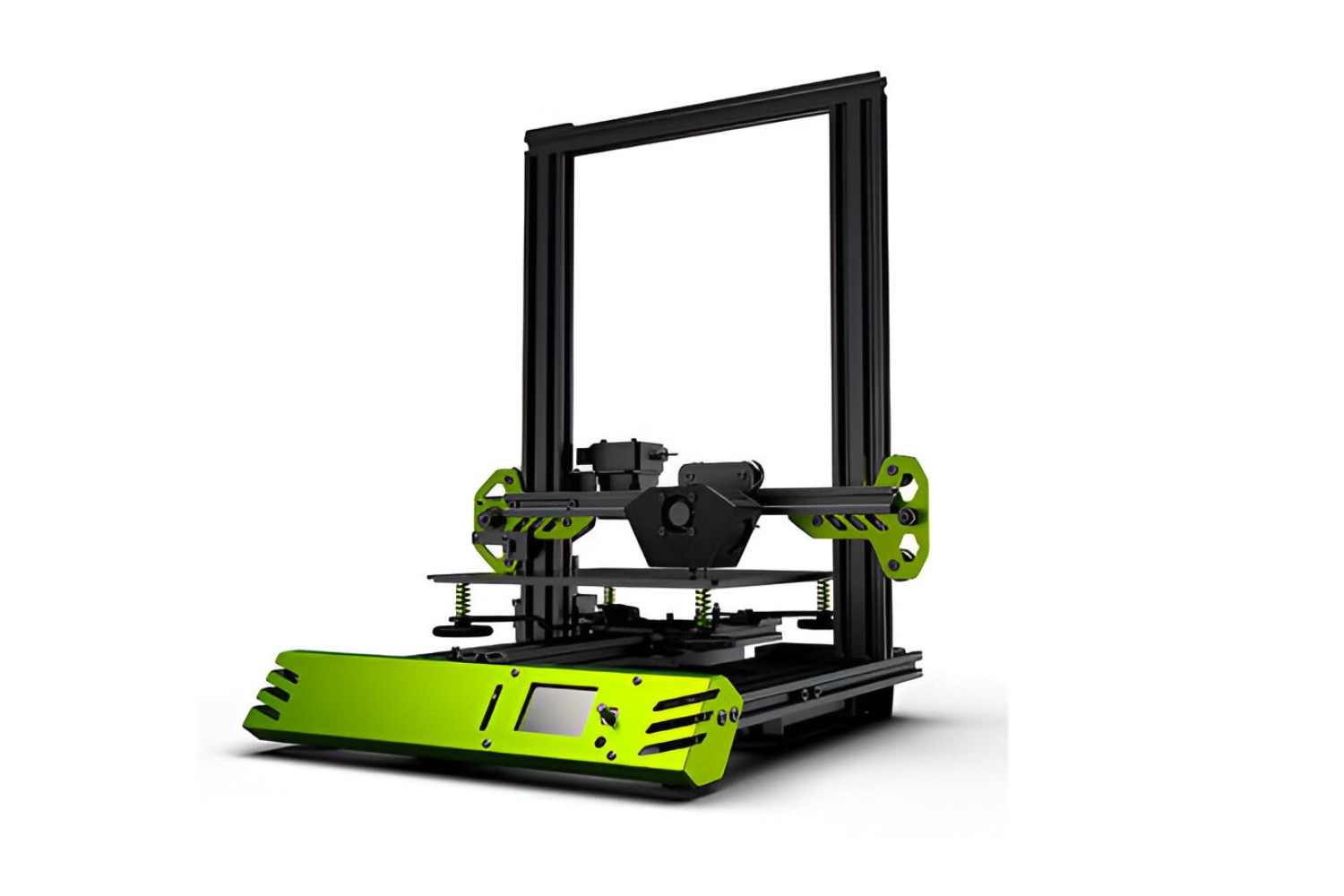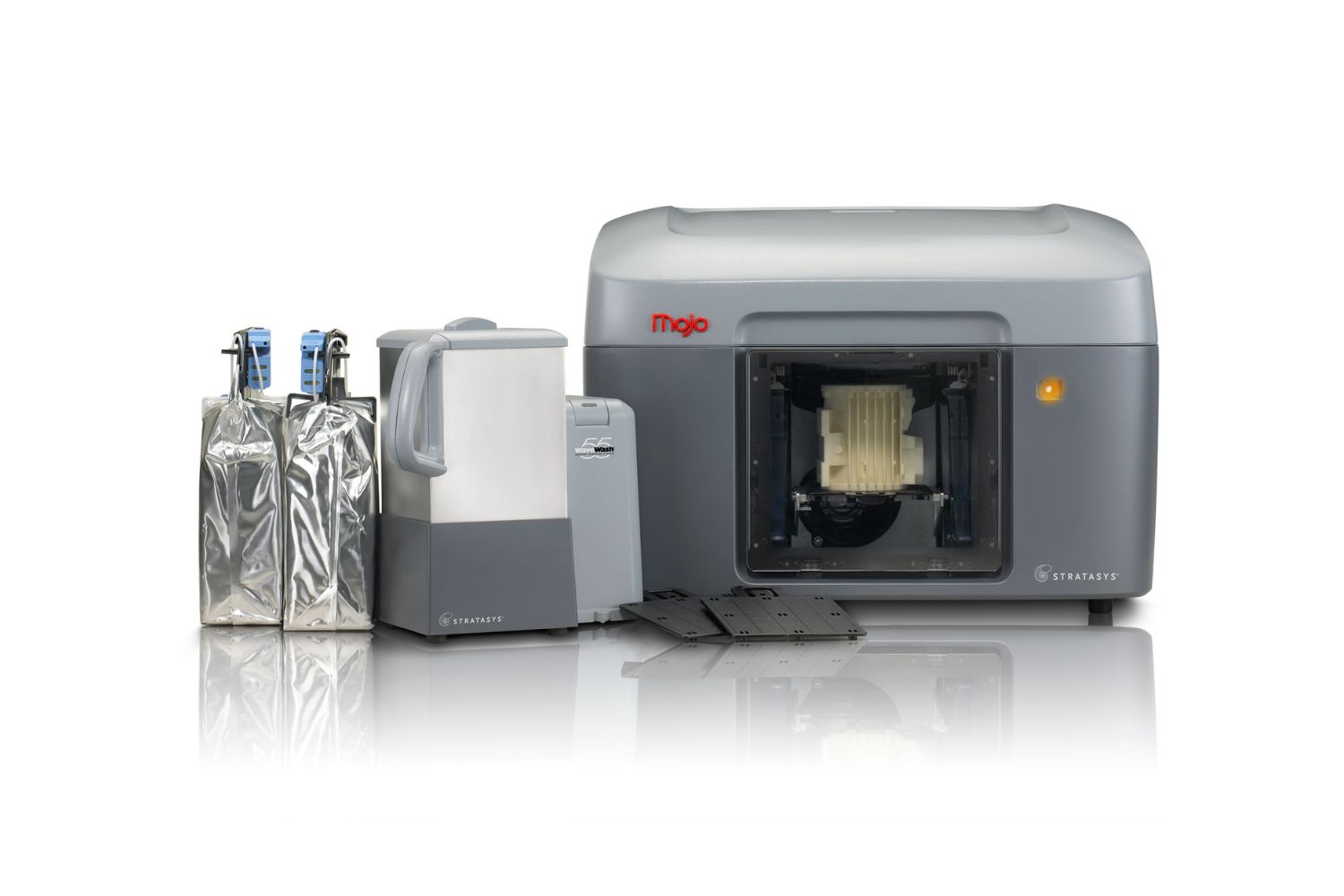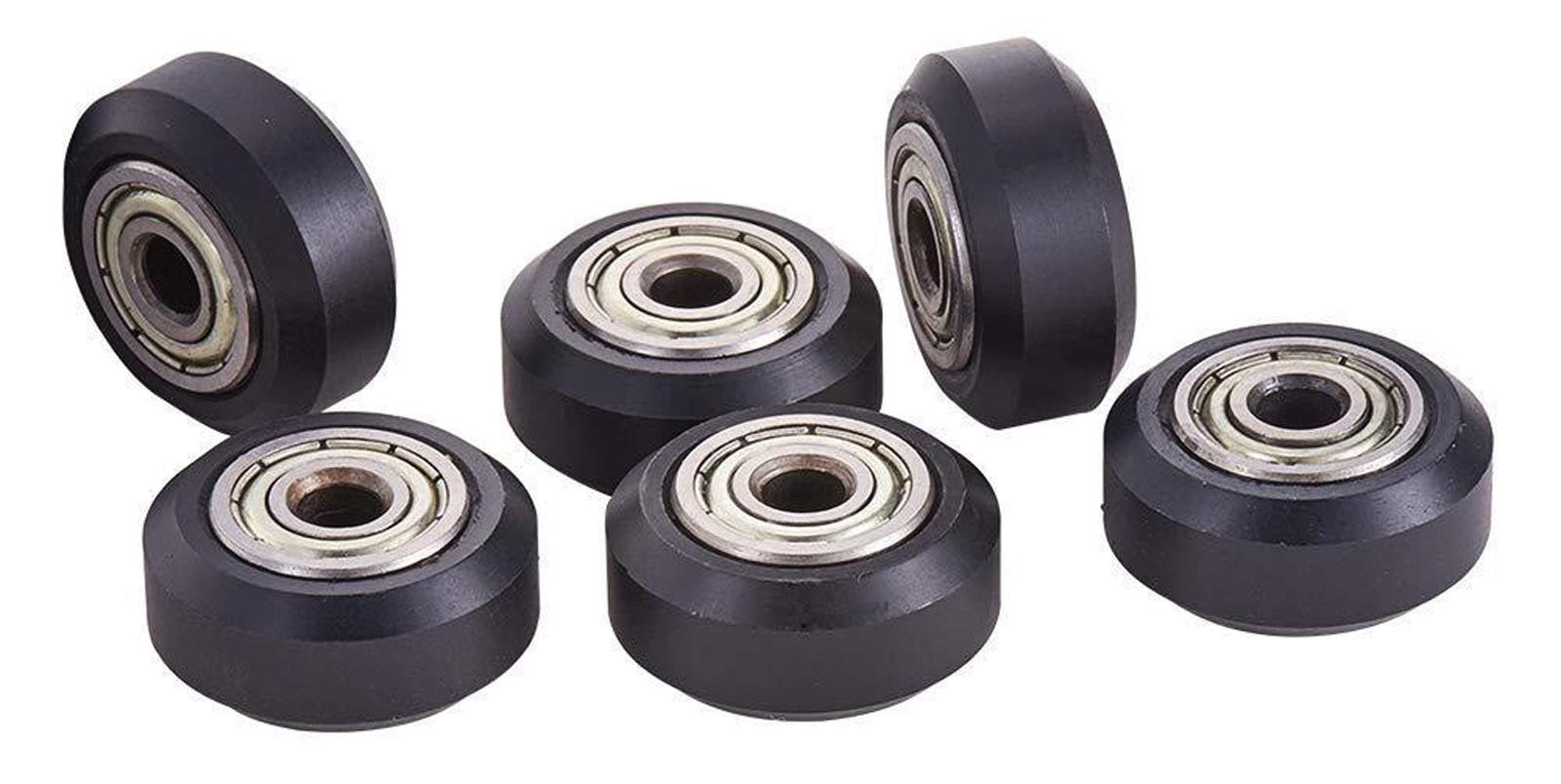Introduction
When it comes to 3D printing, ensuring smooth and precise movement of the printer’s rails is essential for achieving high-quality prints. A well-lubricated rail system not only reduces friction and wear but also enhances the overall performance of the printer. In this article, we will explore different types of lubricants that can be used to maintain and lubricate 3D printer rails.
Whether you are a professional or an enthusiast, you know the frustration caused by a printer that seems to struggle during the printing process. Uneven movements, jerky motions, and misalignments can all be indications of a poorly lubricated rail system. A lack of lubrication can lead to increased friction, causing the printer to work harder and compromising the precision and accuracy of the prints.
By properly lubricating the rails, you can minimize friction and ensure smooth movements, resulting in better print quality and extended rail life. However, it is important to choose the right type of lubricant for your 3D printer rails to avoid any adverse effects on the printing process.
In the following sections, we will discuss various types of lubricants that are commonly used in 3D printing, including silicone lubricants, PTFE lubricants, lithium grease, and Teflon-based dry lubricants. We will take a closer look at their properties, benefits, and considerations for each type.
Additionally, we will provide step-by-step instructions on how to apply these lubricants to the printer rails effectively. By following these guidelines, you can ensure optimal performance and longevity of your 3D printer.
Before we dive into the specifics of each lubricant type, it is important to note that cleanliness and regular maintenance are crucial in maintaining the rail system’s performance. Apart from lubrication, always keep the rails clean and free from debris or dust that could interfere with their smooth movement.
Now let’s explore the different types of lubricants that can be used for 3D printer rails and discover the advantages and considerations of each option.
Why Lubrication is Important for 3D Printer Rails
Lubrication plays a crucial role in maintaining the optimal performance and longevity of 3D printer rails. Here are some reasons why lubrication is important for your printer:
Reduces Friction: One of the primary benefits of lubricating 3D printer rails is that it reduces friction between the moving parts. As the printer operates, the rails experience constant movement, and friction can arise between the rail surfaces. Lubrication forms a protective barrier between these surfaces, minimizing friction and allowing for smooth and efficient movement.
Improves Print Quality: When the printer rails are properly lubricated, the printer’s movements become more accurate and consistent. This directly translates to improved print quality, as the printer can precisely follow the design without any hiccups or deviations caused by friction. Lubrication helps to eliminate unnecessary vibrations and jerky movements, resulting in cleaner prints with better surface finish and detail.
Prolongs Rail Life: Continuous friction and wear can cause damage and premature wear to the printer rails. By applying lubrication, you create a protective layer that reduces the direct contact between the rail surfaces. This helps to minimize wear and tear, extending the life of the rails and reducing the need for frequent replacements.
Reduces Maintenance: A well-lubricated rail system requires less maintenance compared to a dry or poorly lubricated one. Lubrication acts as a preventative measure, reducing the risk of damage to the rails and other moving parts. With regular lubrication, you can minimize the need for repairs and keep your printer running smoothly for longer periods without the need for frequent adjustments or replacements.
Enhances Overall Performance: Lubrication has a positive impact on the overall performance of a 3D printer. It contributes to improved speed and accuracy, allowing for faster and more precise movements. This, in turn, helps to optimize the printing process by minimizing printing errors and reducing the print time required for each project.
Provides a Quieter Printing Experience: Friction between the rails can lead to unwanted noise during the printing process. Lubrication helps to reduce noise by minimizing the rubbing and grinding sounds caused by inadequate lubrication. A well-lubricated rail system results in a quieter printing experience, ensuring a more peaceful and enjoyable work environment.
By understanding the importance of lubrication for your 3D printer rails, you can ensure that your printer performs at its best and produces high-quality prints consistently. Now, let’s dive into the different types of lubricants available for 3D printer rails and explore their advantages and considerations.
Types of Lubricants for 3D Printer Rails
When it comes to lubricating 3D printer rails, there are several types of lubricants available. Each type has its own unique properties and advantages. Let’s take a closer look at some common lubricant options:
Silicone Lubricants: Silicone lubricants are popular choices for 3D printer rails due to their excellent lubricating properties and resistance to high temperatures. They are effective in reducing friction and providing smooth movement. Silicone lubricants also have a low viscosity, allowing them to spread easily over the rail surfaces. However, silicone lubricants can attract dust and debris over time, so periodic cleaning and reapplication may be necessary.
PTFE Lubricants: PTFE (polytetrafluoroethylene) lubricants, also known as Teflon lubricants, offer exceptional lubricating properties and have a high resistance to heat and friction. They provide a long-lasting and smooth glide for the printer rails. PTFE lubricants repel dust and debris, helping to keep the rails clean. However, it is important to use PTFE lubricants specifically designed for 3D printers, as some general-purpose PTFE lubricants may contain additives that could be detrimental to the printer’s performance.
Lithium Grease: Lithium grease is a versatile lubricant that can be used for a wide range of applications, including 3D printer rails. It has good adhesion to metal surfaces, providing long-lasting lubrication. Lithium grease has excellent water resistance and performs well under higher loads and temperatures. However, it is important to use lithium grease sparingly and not apply it excessively, as it can attract dust and debris.
Teflon-based Dry Lubricants: Teflon-based dry lubricants, such as PTFE dry film lubricants, are another option for lubricating 3D printer rails. These lubricants come in the form of a spray or powder and create a thin layer of dry lubrication on the rail surfaces. Dry lubricants have the advantage of not attracting dust or debris, resulting in cleaner rails. However, they may require more frequent reapplication compared to other lubricants.
When choosing a lubricant for your 3D printer rails, consider factors such as temperature compatibility, viscosity, cleanliness, and the specific requirements of your printer model. It is important to follow the manufacturer’s recommendations regarding lubricant selection to ensure optimal performance.
In the next sections, we will dive deeper into each type of lubricant and provide detailed instructions on how to apply them to your 3D printer rails effectively. By understanding the benefits and considerations of each lubricant type, you can make an informed decision and keep your printer running smoothly.
Silicone Lubricants
Silicone lubricants are a popular choice for lubricating 3D printer rails. They offer excellent lubricating properties and are known for their resistance to high temperatures. Here are some key characteristics and considerations when using silicone lubricants:
High Temperature Resistance: One of the advantages of silicone lubricants is their ability to withstand high temperatures without breaking down or evaporating. This makes them suitable for use in 3D printing applications where the printer rails can become hot during prolonged use.
Effective Lubrication: Silicone lubricants provide a smooth gliding action for the printer rails, reducing friction and preventing jerky movements. The low viscosity of silicone lubricants allows them to spread easily over the rail surfaces, ensuring even lubrication across the entire length of the rails.
Dust and Debris Attraction: One consideration when using silicone lubricants is their tendency to attract dust and debris over time. This can result in a buildup of particles on the rail surfaces, which may affect the printer’s smooth movement. Regular cleaning and periodic reapplication of silicone lubricants can help maintain optimal performance.
Non-reactive and Non-corrosive: Silicone lubricants are non-reactive and non-corrosive, making them safe to use on various types of metals and plastics commonly used in 3D printers. They do not damage or degrade the rail surfaces, ensuring the longevity of the printer rails.
When applying silicone lubricants to your 3D printer rails, it is important to follow these steps:
- Start by ensuring that the printer is turned off and unplugged for safety.
- Clean the rail surfaces thoroughly using a soft cloth or brush to remove any dust, debris, or old lubricant residue.
- Apply a small amount of silicone lubricant onto a clean cloth or tissue. Avoid using excessive amounts of lubricant, as this can result in buildup and attract more debris.
- Gently rub the lubricant onto the rail surfaces, making sure to cover the entire length of the rails. Use a back-and-forth motion to ensure even distribution of the lubricant.
- Allow the lubricant to dry for a few minutes before turning the printer back on and resuming normal operation.
It is important to note that different 3D printer models may have specific guidelines or recommendations regarding the use of lubricants, including silicone lubricants. Always refer to the manufacturer’s instructions or consult the printer’s user manual for specific guidelines.
By using silicone lubricants and following proper application techniques, you can maintain the smooth and efficient movement of your 3D printer rails, resulting in improved print quality and overall performance.
PTFE Lubricants
PTFE (polytetrafluoroethylene) lubricants, also known as Teflon lubricants, are commonly used for lubricating 3D printer rails. They offer exceptional lubrication properties and have a high resistance to heat and friction. Here are some key aspects to consider when using PTFE lubricants:
Superior Lubricating Properties: PTFE lubricants provide a long-lasting and smooth glide for the printer rails. They create a low-friction barrier between the rail surfaces, reducing wear and preventing jerky movements. This results in improved print quality due to the printer’s ability to precisely follow the design without any disruptions caused by friction.
Heat and Friction Resistance: PTFE lubricants are known for their resistance to high temperatures and friction. This makes them suitable for use in 3D printers, where the rails can generate heat during prolonged use. The PTFE coating remains stable under these conditions, ensuring reliable performance.
Dust and Debris Repellent: PTFE lubricants have a non-stick property that repels dust and debris. This helps to keep the rail surfaces cleaner for an extended period, reducing the need for frequent cleaning. The lack of debris build-up can contribute to smoother movements and fewer disruptions during the printing process.
Compatibility: It is essential to use PTFE lubricants specifically designed for 3D printers, as some general-purpose PTFE lubricants may contain additives that could be detrimental to the printer’s performance. Consult the manufacturer’s guidelines or user manual to ensure compatibility and optimal results.
Applying PTFE lubricants to your 3D printer rails requires the following steps:
- Ensure that the printer is turned off and unplugged to ensure safety.
- Clean the rail surfaces thoroughly using a soft cloth or brush to remove any dust, debris, or old lubricant residues.
- Apply a small amount of PTFE lubricant to a clean cloth or tissue. Avoid using excessive amounts, as this can lead to wastage and potential accumulation of debris.
- Gently rub the lubricant onto the rail surfaces, making sure to cover the entire length of the rails. Use a back-and-forth motion to ensure even distribution of the lubricant.
- Allow the lubricant to dry for a few minutes before turning the printer back on and resuming normal operation.
Remember to consult the printer’s user manual for any specific guidelines or instructions regarding the use of PTFE lubricants. Following the manufacturer’s recommendations will help ensure optimal performance and longevity of your printer rails.
By using PTFE lubricants, you can enjoy the benefits of reduced friction, improved print quality, and prolonged rail life in your 3D printing projects. With a smoother and more efficient rail system, you can achieve consistent and high-quality prints.
Lithium Grease
Lithium grease is a versatile lubricant that can be used for lubricating 3D printer rails. It offers excellent adhesion to metal surfaces and provides long-lasting lubrication. Here are some key considerations when using lithium grease:
Adhesion and Longevity: Lithium grease is known for its ability to adhere to surfaces, including printer rails, providing long-lasting lubrication. It forms a protective layer that reduces friction and wear, extending the life of the rails and minimizing the need for frequent reapplication.
Water Resistance: Lithium grease has good water resistance properties, making it suitable for use in environments where moisture or humidity can be present. The water-resistant characteristic enhances the effectiveness of the lubricant and protects the rails from corrosion.
Load and Temperature Tolerance: Lithium grease performs well under higher loads and can withstand a range of temperatures. This makes it suitable for use in 3D printers, where the rail system might experience varying loads and temperatures during operation.
Application Considerations: When applying lithium grease to your 3D printer rails, it is important to use it sparingly. Applying excessive amounts of grease can attract dust and debris, potentially causing clogs and affecting the printer’s performance. Apply a thin, even layer of grease to the rail surfaces using a clean cloth or brush.
Here are the steps to apply lithium grease to 3D printer rails:
- Ensure that the printer is turned off and unplugged for safety.
- Clean the rail surfaces thoroughly using a soft cloth or brush to remove any dust, debris, or old lubricant residue.
- Apply a small amount of lithium grease onto a clean cloth or brush.
- Gently apply the grease to the rail surfaces, making sure to cover the entire length of the rails. Use a back-and-forth motion to ensure even distribution.
- Remove any excess grease using a clean cloth.
- Allow the grease to settle for a few minutes.
- Reassemble the printer and resume normal operation.
Always refer to the manufacturer’s instructions or specific printer model guidelines for any recommended lubrication techniques or considerations.
By using lithium grease and following proper application procedures, you can ensure smoother movements, reduced friction, and prolonged rail life, contributing to optimal performance and print quality in your 3D printing projects.
Teflon-based Dry Lubricants
Teflon-based dry lubricants, such as PTFE dry film lubricants, are a popular option for lubricating 3D printer rails. They come in the form of sprays or powders and create a thin layer of dry lubrication on the rail surfaces. Here are some key points to consider when using Teflon-based dry lubricants:
Dry Lubrication: Teflon-based dry lubricants provide a dry, low-friction coating on the printer rails. They create a smooth glide without the use of oils or greases, reducing the possibility of attracting dust or debris. Dry lubricants offer long-lasting performance and minimize the need for frequent reapplication.
Clean and Residue-Free: Teflon-based dry lubricants leave no oily or greasy residue behind, ensuring cleaner rail surfaces. This helps to prevent dust and debris from sticking to the rails, contributing to smoother movements and reducing the risk of clogging or disruptions during the printing process.
Application Considerations: When using Teflon-based dry lubricants, it is important to apply the lubricant evenly and following the manufacturer’s instructions. Ensure that the rail surfaces are clean and free from any debris or old lubricant residue before applying the dry lubricant. Shake the spray can or bottle well before spraying, and hold it at the recommended distance from the rails for an even coating.
Here are the steps to apply Teflon-based dry lubricants to your 3D printer rails:
- Ensure that the printer is turned off and unplugged for safety.
- Clean the rail surfaces thoroughly using a soft cloth or brush to remove any dust, debris, or old lubricant residue.
- If using a spray, hold the can at the recommended distance from the rails and apply a thin and even coat of the dry lubricant.
- If using a powder, lightly sprinkle the powder onto a clean cloth or brush and gently rub it onto the rail surfaces.
- Allow the lubricant to settle and dry for the recommended time.
- Remove any excess lubricant or powder using a clean cloth.
- Reassemble the printer and resume normal operation.
Always follow the manufacturer’s instructions and specific guidelines for your 3D printer model when using Teflon-based dry lubricants.
By using Teflon-based dry lubricants, you can enjoy the benefits of reduced friction, smoother movements, and cleaner rail surfaces in your 3D printing projects. The dry lubrication ensures optimal performance without the worry of attracting dust or debris, resulting in high-quality prints.
How to Apply Lubrication to the Rails
Proper application of lubrication is essential to ensure optimal performance and longevity of your 3D printer rails. Here are some step-by-step instructions on how to apply lubrication effectively:
- Start by ensuring that the printer is turned off and unplugged to ensure safety during the lubrication process. This will prevent any accidental movement or damage to the printer.
- Clean the rail surfaces thoroughly using a soft cloth or brush to remove any dust, debris, or old lubricant residue. This will ensure a clean surface for the new lubricant to adhere to.
- Select the appropriate lubricant for your printer rails based on the manufacturer’s recommendations and guidelines. Consider factors such as temperature compatibility, viscosity, and any specific requirements for your printer model.
- Apply a small amount of lubricant onto a clean cloth, tissue, or brush. Avoid using excessive amounts of lubricant, as this can lead to wastage and potential accumulation of debris.
- Gently rub the lubricant onto the rail surfaces, making sure to cover the entire length of the rails. Use a back-and-forth motion or circular motion to ensure even distribution of the lubricant.
- Pay extra attention to areas where the rails come into contact with moving parts or bearings. These areas may require a slightly higher amount of lubricant to ensure smooth movement.
- Allow the lubricant to settle and penetrate the rail surfaces for a few minutes. This will ensure that the lubricant has spread evenly and adhered to the rail surfaces.
- After the settling period, gently wipe off any excess lubricant using a clean cloth. This will prevent the accumulation of dust or debris on the rail surfaces.
- Reassemble the printer and ensure that all components are properly aligned and tightened.
- Plug in and power on your printer, and verify that the rail movement is smooth and precise. If any issues are observed, recheck the lubrication and make any necessary adjustments.
Remember to consult the manufacturer’s instructions or specific printer model guidelines for any recommended lubrication techniques or considerations. Different printers may have unique requirements, so it is important to follow the manufacturer’s recommendations to ensure optimal performance.
By following these steps and applying lubrication properly, you can ensure smooth and precise movements of your 3D printer rails. Proper lubrication will contribute to enhanced print quality, reduced wear and tear, and a longer lifespan for your printer’s rail system.
Tips and Considerations for Lubricating 3D Printer Rails
Lubricating 3D printer rails is an important maintenance task that requires attention to detail and following proper procedures. Here are some tips and considerations to keep in mind when lubricating your printer rails:
- Follow Manufacturer’s Recommendations: Always refer to the manufacturer’s instructions or specific guidelines for your printer model when it comes to lubrication. Different printers may have unique requirements or restrictions, so it is important to follow the recommended lubrication techniques and use compatible lubricants.
- Use the Right Lubricant: Selecting the appropriate lubricant for your printer rails is crucial. Consider factors such as temperature compatibility, viscosity, and the specific properties required for your printer model. Using the wrong lubricant can have adverse effects on the printer’s performance.
- Apply Lubricant Sparingly: Avoid over-lubricating the rails, as excessive lubricant can attract dust and debris, potentially leading to clogs or disruptions in the printing process. Apply a thin, even layer of lubricant to ensure smooth movement without wastage.
- Keep the Rails Clean: Regularly clean the rails to remove any dust, debris, or old lubricant residue before applying fresh lubricant. This will help ensure better adhesion and prevent the buildup of particles that could affect the printer’s performance.
- Regular Maintenance: Lubricating the printer rails should be part of your regular maintenance routine. Schedule regular intervals for cleaning and lubrication to keep the rail system operating smoothly and to prolong its lifespan.
- Monitor Rail Performance: After lubricating the rails, pay close attention to the printer’s performance. Observe the movement of the rails and check for any irregularities or signs of excessive friction. If necessary, reapply lubricant or make adjustments to ensure optimal rail performance.
- Keep Lubricants Away from Electronics: When applying lubricant, take care to avoid getting any lubricant on electronic components or sensitive parts of the printer. Lubricants may have adverse effects on electronics and lead to malfunctioning or damage.
- Store Lubricants Properly: Follow the manufacturer’s storage recommendations for your lubricants. Some lubricants may require specific storing conditions, such as being kept in a cool and dry place, to maintain their effectiveness.
Remember, proper lubrication of your 3D printer rails is crucial for maintaining smooth movements, prolonging rail life, and ensuring high-quality prints. By following these tips and considerations, you can enhance the performance and longevity of your printer’s rail system.
Conclusion
Lubricating 3D printer rails is a vital aspect of maintaining optimal performance and longevity for your printer. The right lubricant can greatly reduce friction, improve print quality, and prolong the life of the rail system. By following proper lubrication techniques and considering the specific needs of your printer, you can ensure smooth and precise movements, resulting in high-quality prints.
We explored different types of lubricants commonly used for 3D printer rails, such as silicone lubricants, PTFE lubricants, lithium grease, and Teflon-based dry lubricants. Each type has its own advantages and considerations, such as temperature resistance, dust attraction, and longevity. It is important to choose the appropriate lubricant based on your printer’s requirements and guidelines provided by the manufacturer.
When applying lubrication to the rails, it is essential to clean the surfaces thoroughly and apply the lubricant sparingly. Proper lubrication technique ensures even distribution and prevents excessive buildup of lubricant or debris. Regular maintenance and monitoring of rail performance contribute to maintaining optimal function.
Additionally, we discussed various tips and considerations to keep in mind when lubricating 3D printer rails, including following manufacturer recommendations, keeping the rails clean, and regular maintenance. These tips help ensure a smooth and successful lubrication process, ultimately improving the overall performance of your 3D printer.
By incorporating proper lubrication practices into your printer maintenance routine, you can create a more efficient and reliable printing experience. Smooth rail movement leads to enhanced print quality, reduced wear and tear, and a longer lifespan for your printer’s rail system.
Remember, consult your printer’s manufacturer guidelines for specific lubrication recommendations and always prioritize safety when working with your 3D printer. With proper lubrication, you can unleash the full potential of your printer and enjoy consistent, high-quality prints for all your creative endeavors.







